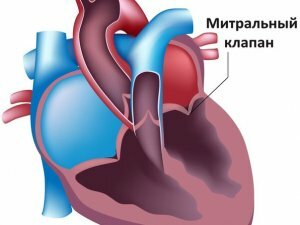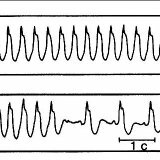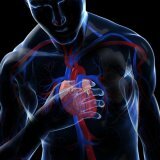Mitral valve prolapse
 Heart valves control the flow of blood through the heart and are made of fine fibrous tissue. A mitral valve in the open state allows blood to flow from the lungs to the heart. The mitral valve is open at the moment when the heart muscle relaxes and the heart is filled with blood. Mitral valve prolapse( PMC) is a widespread disease characterized by abnormal heart function. In most patients, mitral valve prolapse is a congenital and hereditary disease.
Heart valves control the flow of blood through the heart and are made of fine fibrous tissue. A mitral valve in the open state allows blood to flow from the lungs to the heart. The mitral valve is open at the moment when the heart muscle relaxes and the heart is filled with blood. Mitral valve prolapse( PMC) is a widespread disease characterized by abnormal heart function. In most patients, mitral valve prolapse is a congenital and hereditary disease.
Symptoms of
PMC The most common symptoms include heart palpitations, acute left-sided chest pain, dizziness, dyspnoea and fatigue. Usually, fatigue attacks follow after intense work or emotional stress.
Physical exercise with PMD
The heart and muscles, like any other muscle, are strengthened by physical activity. Exercise strengthens the heart and makes it more effective and is generally recommended for people with mitral valve prolapse. A person with mitral valve prolapse should monitor the heart rhythm and other symptoms, reduce physical exertion, if he feels certain changes in the work of the heart.
Mitral valve prolapse, as a rule, is not considered life threatening.
A healthy lifestyle and regular exercise are the basis for controlling the prolapse of the mitral valve.
When you exercise, the tone of the vegetative nervous system increases, which leads to a decrease in the heart rate and a decrease in blood pressure. Exercises are the most powerful medicine for improving the autonomic function.
 Exercise, including walking, running, swimming, cycling at a moderate pace for 30 minutes is the safest way to begin classes with mitral valve prolapse.
Exercise, including walking, running, swimming, cycling at a moderate pace for 30 minutes is the safest way to begin classes with mitral valve prolapse.
Before starting a physical exercise program, you should consult your doctor. Do not rush, do slow movements and do not be surprised if your heart rate increases with physical activity. Exercises strengthen the heart and contribute to its effective work.
Moderate and regular physical activity is not harmful to people with mitral valve prolapse.
Physiotherapy( LFK) with PMD
When mitral valve prolapse is recommended, exercise therapy is recommended. Under the guidance of a qualified trainer, classes are conducted individually with the appropriate loads. When developing a complex of physical exercises, the doctor takes into account the patient's condition and the degree of the disease. Physical loads are aimed at strengthening the state of health and improving the work of the heart, as well as adapting to gradually increasing loads. Physiotherapy prevents the progression of the disease.
 Patient with mitral valve prolapse during exercise should strictly abide by and adhere to doctor's prescriptions so as not to aggravate his health condition.
Patient with mitral valve prolapse during exercise should strictly abide by and adhere to doctor's prescriptions so as not to aggravate his health condition.
Physical loads in patients with mitral valve prolapse are necessary, but their level depends on the particular course of the disease and the motor regimen that is prescribed to the patient. The best examples of physical exercise are running and walking. In order to achieve a healing effect, you should follow the basic rules of training.
Loads with mitral valve prolapse should be periodic and continuous, depending on the person's health. Monitor the pulse and breath. If there is dyspnea or pain during physical exertion, it is necessary to temporarily suspend occupations and rest.
Early activation and development of new safe physical training programs to improve the physical capacity of a person with mitral valve prolapse are the main trends in modern physical rehabilitation of patients with such a disease.
Many people with this disease live their entire life without any particular symptoms of the disease.



